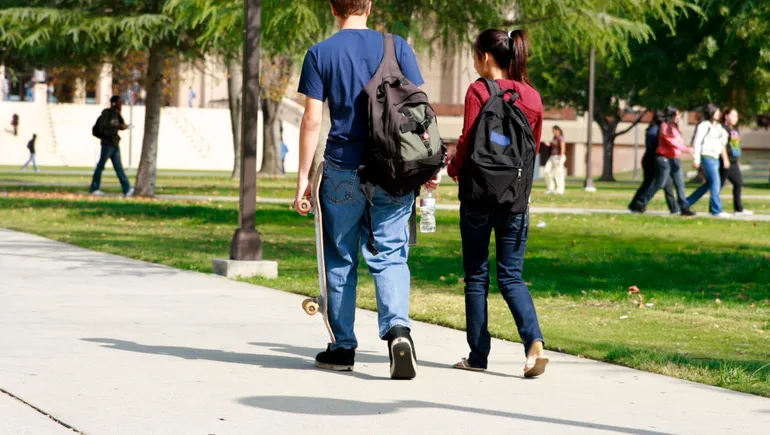Dive Brief:
- Transfer enrollment in fall 2023 rose by 5.3% year over year, according to new National Student Clearinghouse Research Center data released Wednesday. The bump represents almost 63,000 students.
- The number of students transferring directly from one college to another increased by 6.5% in fall 2023, and transfers returning after a stop-out grew by 3.7% year over year.
- Large increases in transfers came from historically disadvantaged students. Black and Hispanic students saw the biggest increase in transfer enrollment among racial and ethnic groups, at 7.8% and 5% respectively.
Dive Insight:
Higher education is still rebounding from COVID-19, which constrained enrollment and transfer rates, according to Doug Shapiro, the research center’s executive director.
The latest data represents one sign of recovery from the pandemic, Shapiro said.
“These are not historically high transfer rates, but they are high compared to the last few years,” he said during a Tuesday call with reporters. “Any increase at this point is good news and is worth highlighting.”
Upward transfers — those who move from two-year institutions to four-year colleges — drove the uptick. They increased by 7.7% across all types of colleges.
Very competitive colleges — ones that generally accept between 50% and 75% of applicants — saw the biggest jump in upward transfer students, with a 13.1% year-over-year increase. In fall 2022, these institutions saw a 7% decline.
Highly selective colleges, which generally admit fewer than half of their applicants, similarly saw a 7.8% increase in upward transfers in fall 2023. The year before, their enrollment of upward transfer students declined 2.5%.
Enrollment among students who transferred to the same level of institution, such as between community colleges, grew by 4.3% in 2023.
Among continuing and returning undergraduates, 13.2% were transfer students, up from 12.5% in fall 2022. Continuing students are those who have stayed enrolled in college while returning students are those who are coming back to higher education after stopping out.
A greater share of stopped-out students are changing institutions when they return to higher education. Over half of returning students, 51.2%, attended an institution different from the one where they last enrolled. That’s up from 44.4% in 2021, according to the clearinghouse.
Returning students most frequently attended community colleges.
Moving to a new institution also prompted a disproportionate number of students to change their field of study, with more than half of transfer students, 54.1%, changing majors.
Transfers don’t change colleges solely based on their academic program needs, according to Shapiro. Factors like class schedules and learning modalities can prompt students to look for a better fit, he said.
The analysis includes institutional data representing just over 88% of colleges that report to the clearinghouse.
title_words_as_hashtags

